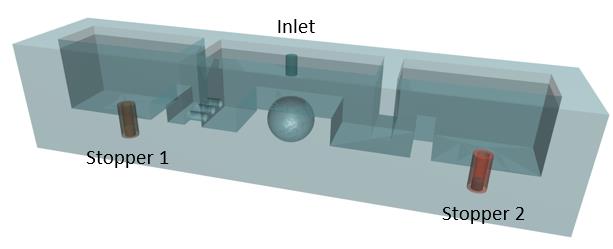Exploring ingot casting: understanding powder
In the fascinating world of ingot casting, numerous particles can find their way into the cavity during the pouring process. These foreign bodies, originating from various sources, can significantly impact the metallurgical quality of the ingot during its cooling and subsequent processing stages. Understanding the intricate interactions between the liquid metal, slag, powders, and other inclusions is vital for ensuring high-quality ingot production. In this article, we will delve into the ongoing scientific projects and advanced software solutions, such as THERCAST®, that aim to anticipate, track, and mitigate these inclusion-related challenges.
Time-Driven Release of Inclusions in Ingot Casting Applications
The Role of Foreign particles
Ingot casting involves the occurrence or introduction of various particles within the cavity through the casting bucket. These foreign bodies can arise from the initial liquid metal in the foundry bucket, interactions with the sand mold, the presence of risers, or even interactions with slag. Particles like oxides, sand, or other inclusions can impact the metallurgical health of the ingot not only during cooling but also in subsequent processing steps until the final manufacturing of the part.
Scientific Research and Defect Mitigation
To address these challenges, several scientific projects are dedicated to studying the interactions between slag and liquid metal, powder entrapment, and the formation of defects and inclusions. State-of-the-art models for embedded abrasives and inclusion generation have already been developed and are going to be integrated into our solution THERCAST®. This powerful software allows the introduction of different particle types (varying in size and density) and enables the tracking of their trajectories during pouring.
Anticipating Inclusion Generation
Several developments are currently underway to achieve a software capable of anticipating the generation and tracking of each inclusion throughout the entire ingot casting process. By leveraging the comprehensive "End-to-End" process simulation approach offered by the Transvalor platform, it becomes possible to estimate the consequences during subsequent steps of metal transformation, such as forging and heat treatment.
Managing Inclusion and related Phenomena with THERCAST®
THERCAST® effectively manages phenomena related to inclusions and employs integrated physical models. By harnessing the power of the software, engineers and researchers gain valuable insights into the behavior of inclusions, enabling them to optimize the ingot casting process and improve the overall metallurgical quality of the final product. Additionally, the software incorporates the impact of turbulence, such as air bubble creation, into the inclusion tracking process, providing a comprehensive overview of various quality issues during this stage. The management of inclusions is available for several applications, such as Tundish in continuous casting and during primary and secondary cooling (the nozzle interaction), as well as different foundry casting processes like HPDC, LPDC, sand casting, and others.
The Tundish Process orchestrates its dynamics with precision, utilizing a flow rate governed by the free surface's min/max levels. The coordinated movement of stoppers enhances molten metal control, while strategically timed inclusion release bolsters product quality. Additionally, air bubble tracking provides insights into the process intricacies.

Tundish process
Inclusion Management in Tundish Applications


